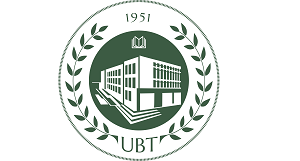1University of Aleksander Xhuvani, Elbasan
2Department of Sciences and Technology Plant, Faculty of Agriculture and Environmental, Agricultural University of Tirana, Tirana
*Corresponding author e-mail: lirika_kupe @yahoo.com; lkupe@ubt.edu.al
Abstract:
Evaluation of trophic states in Ohrid Lake is based in biomonitoring of standing water, especially in epiphyte diatoms in the littoral part which is a tectonic lake. Littoral epiphytic diatoms appear to be good indicators of the fishpond water quality. The trophic and saprobic state is correlated with nutrient enrichment and organic pollution. This indicates that the structures of the communities reflect real environmental changes. Individual species of diatoms have specific preference to habitat and requirement for water chemistry. In this study, more epiphytic and oligotrophic species (such as Cymbella spp., Gomphonema clevei, G. gracile etc.) were appeared while more euplanktonic meso and/or eutrophic species toward sediment surface. Diatoms can be used as long-term indicators with high spatial resolution. The most abundant species were: Cyclotella ocellata, C. meneghiniana; Achnanthes minutissima, Amphora fogediana, Cocconeis pediculus, C.placentula, Cymbella, microcepfala, C. affinis, C. caespitose, etc., Some of diatoms species were found rarely which included: Stephanodiscus medius, Achnanthes lanceolata, Amphora montana, Cymatoplleura elliptica, Epithemia, sorex, Fragilaria capucina, Gomphonema clavatum, G. gracile, Navicula bryophyla, N. cuspidate etc. The species of a favorable taxonomic group occupy all water covered substrates of the lakes and are present during the whole period. Our data highlights the floristic richness in water, its trophy and pollution state. An important role has the human impact in the nearby basin giving recommendation aiming to prevent environment impact regarding water quality..
Keywords: lake Ohrid; littoral zone; trophic state; diatom; ecological status.

